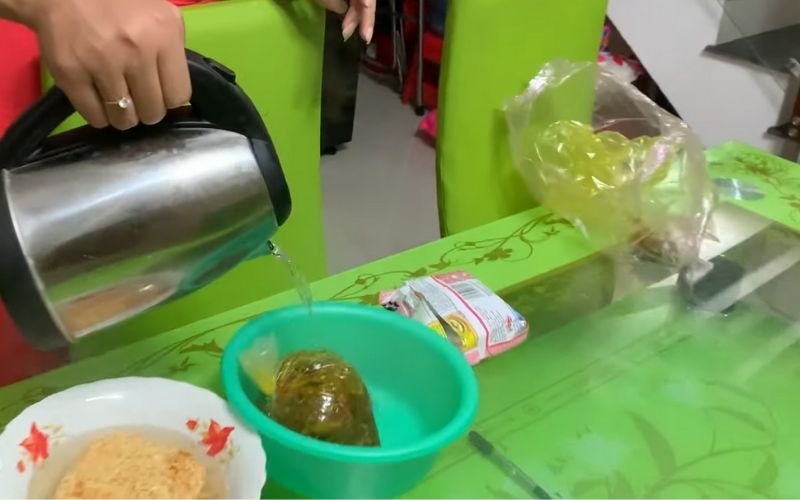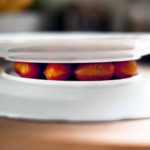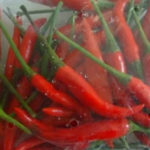There are numerous ways to reheat food, but today we’ll show you a method that doesn’t require any appliances. Let’s take a look!
A Quick Way to Reheat Food Without a Stove
What You’ll Need
- A food storage bag
- Boiling water
- A small pot or
- A lid
Instructions
First, place the food you want to reheat into a plastic bag and seal it tightly. Then, submerge the bag in sufficiently hot water and cover the pot for about 7-8 minutes.
Note: Make sure the bag you use is made of PE material! PE bags are waterproof and can withstand temperatures up to 82°C, melting only at temperatures between 120°C and 180°C. This makes them ideal for safely reheating food using this method.

And there you have it! Your food is reheated without the need for additional oil or the risk of burning.
 Food reheated without the addition of oil or the risk of burning
Food reheated without the addition of oil or the risk of burning
However, we do not recommend using this method regularly. Prolonged exposure of plastic bags to hot water may not be the healthiest option for your food or your body.
That being said, this technique can come in handy during outdoor trips or when you’ve forgotten your regular food containers. It’s a convenient “quick-fix”!
We hope this quick food reheating trick, which doesn’t require a stove, will come in handy when you need it. Stay happy!
food-receipt/ten-strategies-to-streamline-your-cooking-process/’ title=’Ten Strategies to Streamline Your Cooking Process’>Ten Strategies to Streamline Your Cooking Process
Are you a busy housewife looking for ways to save time in the kitchen? Did you know that flossing can also help you out? Check out these 10 tips to help you quickly and easily prepare delicious meals for your family. Learn how to peel garlic in 10 seconds and cut cherry tomatoes quickly for a healthy and tasty meal.
4 Strategies for Storing Chili for One Month
Do you want to enjoy the fresh, spicy flavor of chili peppers all month long? Look no further! This article provides tips and tricks for storing chili peppers so that they stay fresh and flavorful for up to a month. Learn how to best preserve your peppers and savor their zesty taste for weeks to come.
Discover the Quickest Way to Clean Your Fridge for Tet in Under 20 Minutes
As we approach Tet, preparations for the New Year can seem endless. From cleaning the house to sorting through cabinets, it can be a taxing process. But perhaps the most dreaded New Year chore is refrigerators. No need to fret, though – with these helpful tips, you’ll have a clean fridge in no time – just 20 minutes!














